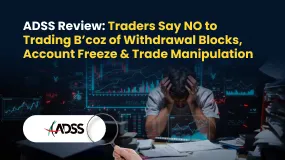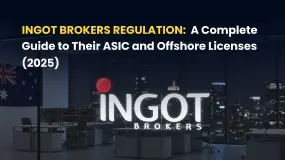简体中文
繁體中文
English
Pусский
日本語
ภาษาไทย
Tiếng Việt
Bahasa Indonesia
Español
हिन्दी
Filippiiniläinen
Français
Deutsch
Português
Türkçe
한국어
العربية
Volatility Risk
Abstract:Volatility Risk The volatility of a security is defined as the change in the asset in percentage terms on an annualized basis. Most investors are cognizant of volatility as it relates to returns on their portfolio especially if the market is moving lower. Volatility can be gauged in many ways

Volatility Risk
The volatility of a security is defined as the change in the asset in percentage terms on an annualized basis. Most investors are cognizant of volatility as it relates to returns on their portfolio especially if the market is moving lower. Volatility can be gauged in many ways and there are a number of popular matrixes that are used to monitor volatility risk.
Measuring Volatility
Most investors view volatility as a measure of an adverse move of their portfolio. In fact, volatility pertains to both upward movements in a security as well as downward movements of a security. The most common way to measure volatility is to determine the standard deviation of the returns of a financial instrument or portfolio.
The reason volatility risk is important is that investors should be paid as the risk increases. Risk is directly related to volatility and increases along with increases in the volatility of a security. There are a number of ways to measure the volatility of a portfolio which including the Sharpe Ratio.
Sharpe Ratio
William Sharpe created a formula in an effort to measure the accuracy of a portfolio relative to the volatility of the underlying returns. The Sharpe ratio measures risk-adjusted returns and divide this measurement by the standard deviation of the average-returns. This tells you how much volatility you need to accept to achieve the returns you desire. The higher the Sharpe ration the more return you receive for a specific amount of volatility. For example, a Sharpe ratio of 2 says that an investors receives twice as much return for the amount of volatility taken.
Historical Volatility
Historical volatility is measured as the standard deviations of a specific period calculated on an annualized basis. For example, a historical volatility of 30% reflects a security that has moved 30% from one point to another over the course of a year.
When a financial security has a higher volatility relative to a comparable benchmark, the security is described as having a high beta.
Beta
The beta of the security is a measurement in which the number reflects its relationship to its benchmark, with the number 1, reflecting a neutral reading. A security with a beta of 1 would move in tandem with its benchmark. A security that is less than one is less volatile than its market benchmark, while betas that are greater than 1 are more volatile than their benchmark.
Hedging
The volatility risk of a portfolio can be hedge with a number of financial instruments including options and indexes. Options are the right but not the obligation to purchase or sell as security at a specific price on or before a certain date. An option is priced based on implied volatility which assists in the process of hedging volatility risk. Implied volatility risk is known as the Vega or a security. To hedge a portfolio of stock, and invest can use a put option which give the investor the right to sell a security or index and therefore would protect the investor against an adverse move in stocks. Volatility risk is important to understand as it is prevalent in all portfolios.

Disclaimer:
The views in this article only represent the author's personal views, and do not constitute investment advice on this platform. This platform does not guarantee the accuracy, completeness and timeliness of the information in the article, and will not be liable for any loss caused by the use of or reliance on the information in the article.
Read more

Grand Capital Doesn’t Feel GRAND for Traders with Withdrawal Denials & Long Processing Times
The trading environment does not seem that rosy for traders at Grand Capital, a Seychelles-based forex broker. Traders’ requests for withdrawals are alleged to be in the review process for months, making them frustrated and helpless. Despite meeting the guidelines, traders find it hard to withdraw funds, as suggested by their complaints online. What’s also troubling traders are long processing times concerning Grand Capital withdrawals. In this Grand Capital review segment, we have shared some complaints for you to look at. Read on!

EmiraX Markets Withdrawal Issues Exposed
EmiraX Markets Review reveals unregulated status, fake license claims, and withdrawal issues. Stay safe and avoid this broker.

ADSS Review: Traders Say NO to Trading B’coz of Withdrawal Blocks, Account Freeze & Trade Issues
Does ADSS give you plenty of excuses to deny you access to withdrawals? Is your withdrawal request pending for months or years? Do you witness account freezes from the United Arab Emirates-based forex broker? Do you struggle to open and close your forex positions on the ADSS app? Does the customer support service fail to respond to your trading queries? All these issues have become a rage online. In this ADSS Broker review article, we have highlighted actual trader wordings on these issues. Keep reading!

INGOT Brokers Regulation 2025: ASIC vs Offshore License - What Traders Must Know
Explore INGOT Brokers regulation in 2025: Compare their ASIC and Seychelles FSA licenses, understand trader protection levels, and learn about potential risks in this detailed guide.
WikiFX Broker
Latest News
Mitrade Arabic Platform Targets MENA Gold Trading Boom
Israeli Arrested in Rome Over €50M Forex Scam
New FCA Consumer Alert 2025: Important Warning for All Consumers
EmiraX Markets Withdrawal Issues Exposed
Consob Targets Political Deepfake “Clone Sites” and Unlicensed Platforms in Latest Enforcement Round
WikiEXPO Global Expert Interviews: Gustavo Antonio Montero: ESG in Finance
Scam Alert: GINKGO-my.com is Draining Millions from Malaysians!
Polymarket Onboards First US Users Since 2022 Shutdown: Beta Relaunch Signals Major Comeback
US Seizes US15 Billion in Bitcoin as Prince Group Rejects Crypto Scam Allegations
INGOT Brokers Regulation 2025: ASIC vs Offshore License - What Traders Must Know
Currency Calculator



